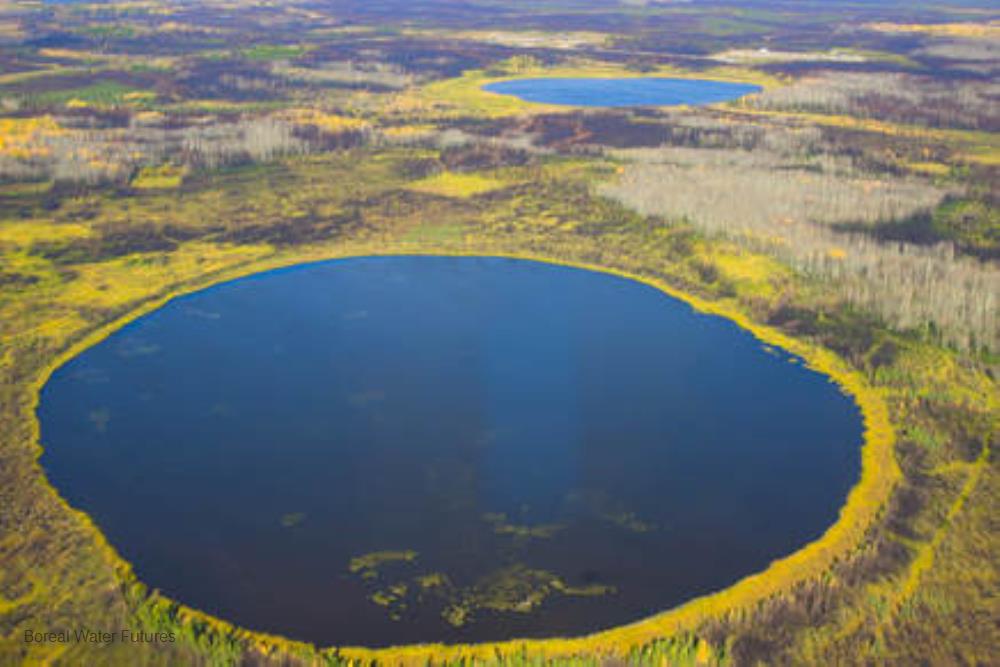
Related items loading ...
Section 1: Publication
Publication Type
Conference Poster
Authorship
Mills Riley, Rezanezhad Fereidoun, Bulur Ecenur, Napieralsk Stephanie, Arntzen Evan, Loheide Steven P., Roden Eric, Ginder-Vogel Matthew, Van Cappellen Philippe
Title
Flow-Through Reactor Experiments to Inform Modelling of Transport and Retention Processes for Particulate Organic Matter in Riverbeds
Year
2022
Publication Outlet
AOSM2022
DOI
ISBN
ISSN
Citation
Riley Mills,Fereidoun Rezanezhad, Ecenur Bulur, Stephanie Napieralsk, Evan Arntzen, Steven P. Loheide, Eric Roden, Matthew Ginder-Vogel, Philippe Van Cappellen (2022). Flow-Through Reactor Experiments to Inform Modelling of Transport and Retention Processes for Particulate Organic Matter in Riverbeds. Proceedings of the GWF Annual Open Science Meeting, May 16-18, 2022.
Abstract
The infiltration of river water into riverbeds can deliver particulate organic matter (POM: the remains of plants, algae, and other life), which has an important role for transforming nutrients in watersheds. Once POM is degraded to dissolved organic matter (DOM), it can provide a source of carbon, electron donors, and nutrients for microorganisms to use in biogeochemical reactions that drive nutrient cycles. Over the length of a river, these small-scale riverbed processes can have a large cumulative impact on river biogeochemistry, so a better understanding of small-scale POM transport and retention processes in riverbeds could help improve large-scale nutrient cycling models. My research question is ‘how do the magnitude of hydrologic fluxes into riverbeds influence the vertical transport and retention of POM in riverbed sediments?’ My objective is to identify and quantify vertical transport and retention processes for POM in riverbeds under different flow rates using flow-through reactor (FTR) experiments. In FTRs (10 cm length), algae powder (Chlorella, an analog for POM) is applied as a paste on top of 8 cm of saturated quartz sand. I am repeating this experiment at downward vertical flow rates of 5, 10, 15, and 30 mL/h (specific discharge of 0.1, 0.2, 0.3, and 0.6 m/d). To plot breakthrough curves, I determine Chlorella concentrations in effluent by measuring absorbance (at 660 nm wavelength) with a Flexstation Multi-Mode Microplate Reader. To plot depth profiles, I determine the mass of Chlorella retained on sediment in 1 cm depth intervals using the loss-on-ignition method. In this poster, I present breakthrough curves from one of these experiments and outline the associated reactive transport modelling. Transport of POM is modelled by advection, hydrodynamic dispersion, and gravitational settling. Retention of POM is modelled by filtration to sediment and reversible sorption to filtered POM. The results of experiments conducted at a range of flow rates will inform further revisions to the model. It is expected that increasing the flow rate increases the mass of POM retained by filtration, which could result in higher dissolved organic matter (DOM) concentrations and more DOM oxidation in riverbeds. Thus, remobilized POM, DOM, and oxidation products may be returned to rivers during flow reversals, influencing the biogeochemistry of both rivers and riverbeds.
Plain Language Summary
Section 2: Additional Information
Program Affiliations
Project Affiliations
Submitters
|
Riley Mills | Submitter/Presenter | rhmills@uwaterloo.ca | University of Waterloo |
Publication Stage
N/A
Theme
Water Quality and Aquatic Ecosystems
Presentation Format
poster presentation
Additional Information
AOSM2022 First Author: Riley Mills, University of Waterloo Additional Authors: Riley Hanson Mills (University of Waterloo); Dr. Fereidoun Rezanezhad (University of Waterloo); Ecenur Bulur (University of Wisconsin Madison); Dr. Stephanie Napieralski (University of Wisconsin Madison); Evan Arntzen (Pacific Northwest National Lab); Dr. Steven P. Loheide (University of Wisconsin Madison); Dr. Eric Roden (University of Wisconsin Madison); Dr. Matthew Ginder-Vogel (University of Wisconsin Madison); Dr. Philippe Van Cappellen (University of Waterloo)


 GWFNet
GWFNet Master
Master Data
Data Research
Research Map
Map
 Advanced
Advanced Tools
Tools
 . . .
. . .
 Metadata Editor
Metadata Editor
 Record List
Record List
 Alias List Editor
Alias List Editor
 Legacy sites
Legacy sites